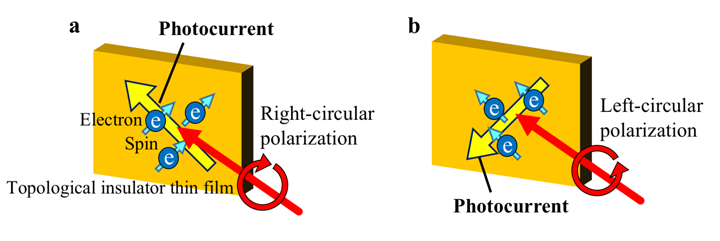Success of Optical Control of Spin-polarized Photocurrent in Topological Insulator!
November 13, 2018
National Institute of Information and Communications Technology
Osaka Prefecture University
The main point of research

- Spin-polarized photocurrents are successfully generated on the surface of topological insulator (TI) thin films by light irradiation without electronic field or magnetic field.
- We demonstrate that the flow direction of spin-polarized photocurrents can be precisely and selectively controlled by manipulating the polarization of the optical pulses.
- These results will open the way as innovative methods to control spin-polarized electrons in optoelectronic and spintronic TI devices.
Abstract
Glossary
Contact
Prof. Kohji Mizoguchi
Graduate School of Science, Osaka Prefecture University
E-mail:
































